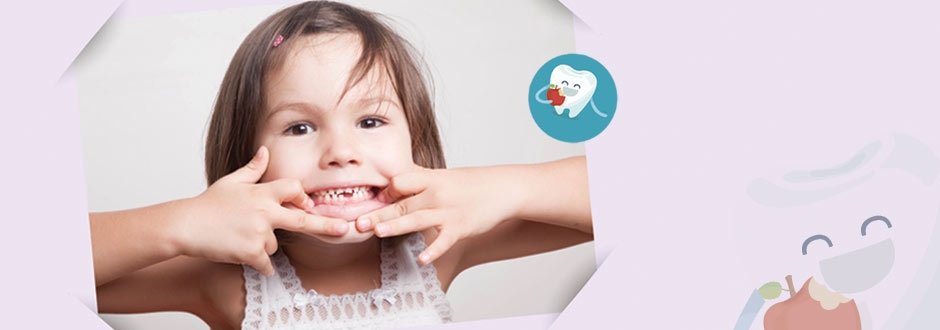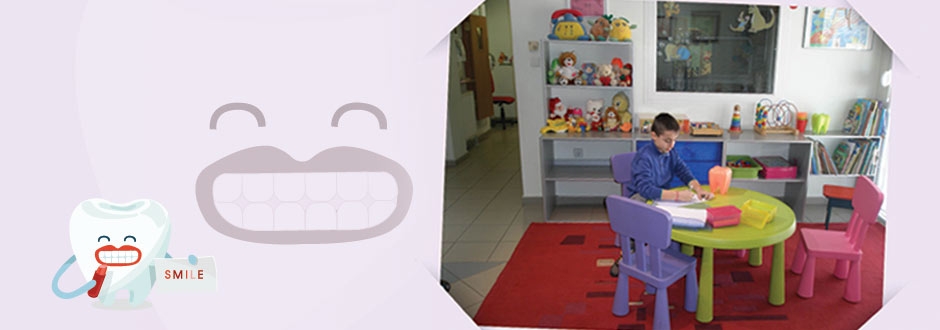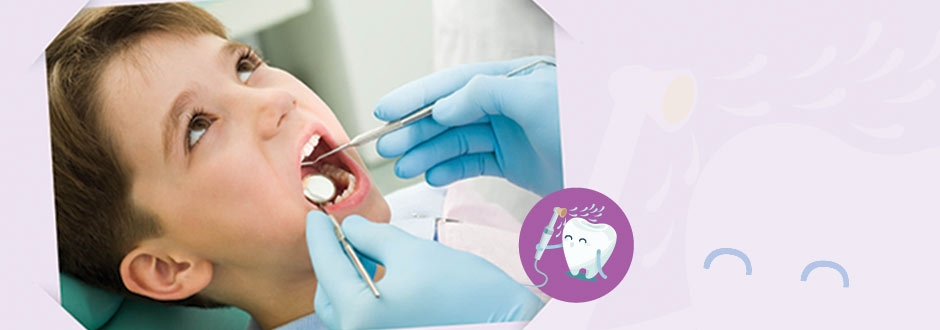http://toothfairy.gr - Πολιτική για τα cookies
Η παρούσα σελίδα εξηγεί την προσέγγισή των ιδιοκτητών του ιστότοπου ως προς την πολιτική απορρήτου και πώς αυτή επηρεάζει εσάς κατά την πλοήγηση στον ιστότοπο μας.
Γενικά
- Συλλέγουμε ανώνυμα στατιστικά στοιχεία σχετικά με την επίσκεψή σας, όπως το ποιες από τις σελίδες μας επισκεφθήκατε.
- Στον ιστότοπο μας φιλοξενούμε κομμάτια κώδικα από τρίτα μέρη, όπως η Facebook και η Twitter, οι οποίες ενδέχεται να γνωρίζουν ότι επισκεφθήκατε τον παρόντα ιστότοπο, εάν χρησιμοποιείτε τις υπηρεσίες τους. Δεν μπορούμε να παρέμβουμε σ’ αυτά τα τρίτα μέρη, αλλά δεν πιστεύουμε ότι αυτή η γνώση εκ μέρους τους συνιστά απειλή για σας.
- Αν εγγραφείτε στις υπηρεσίες μας, σας διαβεβαιώνουμε πως διατηρούμε τις πληροφορίες σας ασφαλείς και δεν θα τις μοιραστούμε με άλλους χωρίς τη ρητή άδειά σας.
- Δεν δίνουμε ποτέ προσωπικές πληροφορίες των επισκεπτών μας σε τρίτους, παρά μόνο για τη διασφάλιση των προσφερόμενων υπηρεσιών του ιστότοπου.
Τα παραπάνω είναι τα βασικά σημεία της πολιτικής απορρήτου που ακολουθούμε. Αν θέλετε λεπτομέρειες, συνεχίστε την ανάγνωση του παρόντος.
Οι περισσότερες ιστοσελίδες που επισκέπτεστε χρησιμοποιούν cookies για τη βελτίωση της δικής σας εμπειρίας, επιτρέποντας στην κάθε ιστοσελίδα να σας «θυμάται», είτε κατά τη διάρκεια της επίσκεψής σας (χρησιμοποιώντας ένα «προσωρινό cookie»), είτε για επανειλημμένες επισκέψεις (χρησιμοποιώντας ένα «μόνιμο cookie»).
Οι λειτουργίες των cookies είναι πολλές και διαφορετικές, όπως το να σας επιτρέπουν να πλοηγήστε μεταξύ σελίδων αποτελεσματικά, να αποθηκεύουν τις προτιμήσεις σας, και γενικά να βελτιώνουν την εμπειρία της πλοήγησής σας στην ιστοσελίδα. Τα cookies κάνουν την αλληλεπίδρασή σας με την ιστοσελίδα ταχύτερη και ευκολότερη. Αν ένας ιστότοπος δεν χρησιμοποιεί cookies, τότε θα νομίζει ότι είστε ένας νέος επισκέπτης κάθε φορά που μεταβαίνετε σε μια νέα σελίδα του – για παράδειγμα, αν εισάγετε τα στοιχεία εισόδου σας (όνομα χρήστη και κωδικός) και μετά μεταβείτε σε μια άλλη σελίδα, τότε ο ιστότοπος δεν θα σας αναγνωρίζει και δεν θα είναι σε θέση να σας διατηρήσει σε κατάσταση σύνδεσης.
Κάποιοι ιστότοποι χρησιμοποιούν επίσης cookies ώστε να μπορούν να στοχεύσουν τις διαφημίσεις τους ή τα προωθητικά τους μηνύματα βάσει, π.χ. της τοποθεσίας σας και / ή των συνηθειών πλοήγησής σας.
Τα cookies μπορεί να ενεργοποιούνται από την ιστοσελίδα που επισκέπτεστε («cookies πρώτου μέρους») ή μπορεί να ενεργοποιούνται από άλλες ιστοσελίδες που «τρέχουν» περιεχόμενο στην ιστοσελίδα («cookies τρίτων μερών»).
Τι εμπεριέχεται σ’ ένα cookie;
Ένα cookie είναι ένα απλό αρχείο κώδικα που αποθηκεύεται στον υπολογιστή ή στην κινητή συσκευή σας από τον διακομιστή ενός ιστότοπου και μόνο αυτός ο διακομιστής είναι σε θέση να ανακτήσει ή να διαβάσει τα περιεχόμενα αυτού του cookie. Κάθε cookie είναι μοναδικό για το φυλλομετρητή σας. Περιέχει κάποιες ανώνυμες πληροφορίες, όπως ένα μοναδικό αναγνωριστικό και το όνομα του ιστότοπου και κάποια ψηφία και αριθμούς. Το cookie επιτρέπει σε έναν ιστότοπο να θυμάται πράγματα, όπως οι προτιμήσεις σας ή το τι περιέχεται στο καλάθι αγορών σας.
Προσαρμόστε τα cookies στο φυλλομετρητή
Αν δεν θέλετε να λαμβάνετε cookies, μπορείτε να τροποποιήσετε το φυλλομετρητή σας ώστε να σας ειδοποιεί όταν σας αποστέλλονται cookies, ή μπορείτε και να τα απορρίψετε εντελώς. Επίσης, μπορείτε να διαγράψετε cookies που έχουν ήδη αποθηκευτεί.
Αν θέλετε να περιορίσετε ή να μπλοκάρετε τα cookies που έχουν αποθηκευτεί στο φυλλομετρητή ή τη συσκευή σας, μπορείτε να το κάνετε μέσω των ρυθμίσεων του φυλλομετρητή σας. Το κουμπί «Βοήθεια» εντός του φυλλομετρητή θα σας πει πώς. Εναλλακτικά, μπορείτε να επισκεφθείτε τον ιστότοπο www.aboutcookies.org, ο οποίος διαθέτει περιεκτικές πληροφορίες ως προς το πώς να το κάνετε αυτό σε μια μεγάλη ποικιλία φυλλομετρητών για desktop.
Ο ιστότοπός μας λειτουργεί και χωρίς cookies, αλλά θα χάσετε κάποια χαρακτηριστικά και λειτουργίες του αν επιλέξετε να απενεργοποιήσετε τα cookies, και ιδιαίτερα από τρίτα μέρη, όπως κουμπιά κοινωνικού διαμοιρασμού κλπ.
Cookies τρίτων μερών όπως Facebook, Twitter και άλλα κοινωνικά δίκτυα
Αυτές οι υπηρεσίες παρέχουν κουμπιά κοινωνικών δικτύων και παρόμοια χαρακτηριστικά που χρησιμοποιούμε στον ιστότοπό μας – όπως τα κουμπιά ‘Like’ και ‘Tweet’.
Για να το κάνουμε αυτό, ενσωματώνουμε κώδικα που παρέχουν αυτοί και που εμείς δεν ελέγχουμε. Για να λειτουργήσουν, τα κουμπιά τους γενικά γνωρίζουν αν είστε συνδεδεμένος. Για παράδειγμα, το Facebook χρησιμοποιεί αυτή τη λειτουργία για να σας ενημερώσει ότι η σελίδα που επισκέπτεστε «αρέσει σε x φίλους σας». Δεν έχουμε καμία πρόσβαση σε αυτές τις πληροφορίες και ούτε μπορούμε να ελέγξουμε πώς αυτά τα δίκτυα χρησιμοποιούν αυτές τις πληροφορίες.
Τα κοινωνικά δίκτυα, συνεπώς, μπορεί να γνωρίζουν ότι παρακολουθείτε τον παρόντα ιστότοπο, αν χρησιμοποιείτε τις υπηρεσίες τους (δεν σημαίνει ότι το κάνουν, αλλά οι πολιτικές τους συχνά υπόκεινται σε αλλαγές). Εφόσον ο ιστότοπός μας είναι εντελώς άκακος, φανταζόμαστε ότι αυτό δεν αποτελεί αιτία ανησυχίας για τους περισσότερους χρήστες.
Καταγραφή του πλήθους των επισκεπτών μας
Μετράμε τους επισκέπτες μας στον ιστότοπό μας χρησιμοποιώντας το Google Analytics. Αυτό το εργαλείο καταγράφει ποιες σελίδες παρακολουθείτε εντός του ιστότοπού μας, πώς φτάσατε στον ιστότοπό μας, καθώς και κάποιες βασικές πληροφορίες σχετικά με τον ηλεκτρονικό υπολογιστή σας. Όλες αυτές οι πληροφορίες είναι ανώνυμες – συνεπώς δεν γνωρίζουμε ποιος είστε, παρά μόνο ότι κάποιος επισκέφθηκε τον ιστότοπό μας.
Οι πληροφορίες που εξάγουμε από τη μέτρηση και την αξιολόγηση των στατιστικών που συλλέγουμε, μάς βοηθούν να καταλάβουμε ποια τμήματα του ιστότοπού μας πηγαίνουν καλά, πόσοι άνθρωποι επισκέπτονται τον ιστότοπό μας, κ.ο.κ. Όπως οι περισσότεροι ιστότοποι, χρησιμοποιούμε αυτές τις πληροφορίες για να κάνουμε τον ιστότοπό μας καλύτερο.
Μπορείτε να μάθετε περισσότερα σχετικά με το Google Analytics ή να εξαιρεθείτε αν θέλετε
Τα cookies που συλλέγουμε είναι τα εξής:
Google Analytics: _utma | _utmb | _utmc | _utmz
Αυτά τα cookies χρησιμοποιούνται για τη συλλογή πληροφοριών σχετικά με το πώς οι επισκέπτες χρησιμοποιούν τον ιστότοπό μας. Χρησιμοποιούμε τις πληροφορίες για να καταρτίζουμε αναφορές και να βοηθούμαστε στη βελτίωση της ιστοσελίδας. Τα cookies συλλέγουν πληροφορίες σε μια ανώνυμη μορφή, συμπεριλαμβανομένων του αριθμού των επισκεπτών στην ιστοσελίδα, από πού ήρθαν οι επισκέπτες στην ιστοσελίδα, και ποιες σελίδες επισκέφθηκαν.
Κάντε κλικ εδώ για μια επισκόπηση της πολιτικής απορρήτου και ασφάλειας δεδομένων της Google
Cookie συνεδρίας χρήστη: PHPSESSID
Αυτό το cookie δημιουργείται από εφαρμογές που βασίζονται στη γλώσσα PHP. Πρόκειται για ένα αναγνωριστικό γενικού σκοπού που χρησιμοποιείται για τη διατήρηση των μεταβλητών συνεδρίας χρήστη. Συνήθως είναι ένας τυχαία παραγόμενος αριθμός. Η χρήση του αφορά συγκεκριμένα την ιστοσελίδα και χρησιμοποιείται για να διατηρήσει την κατάσταση σύνδεσης ενός χρήστη μεταξύ διαφόρων σελίδων εντός του ίδιου ιστότοπου.
Αναγνωριστικό γλώσσας: page_lang
Αυτό το cookie χρησιμοποιείται για τον προσδιορισμό της γλώσσας του επισκέπτη.
Η ιστοσελίδα μπορεί να χρησιμοποιεί επιπλέον cookies για συγκεκριμένους σκοπούς όπως: διαδικτυακό κατάστημα, μέσα κοινωνικής δικτύωσης, κ.λπ.
Περισσότερες πληροφορίες για την χρήση και διαχείριση των cookies στον ιστοτόπο μπορείτε να βρείτε στις ιστοσελίδες:
α) Σχετικά με τα cookie και την διαχείριση τους:
http://www.aboutcookies.org/default.aspx
http://www.whatarecookies.com/
β) Σχετικά με την πολιτική της Google:
https://www.google.com/about/company/user-consent-policy.html
https://www.google.com/policies/technologies/cookies/
http://www.google.com/intl/el/policies/privacy/partners/




